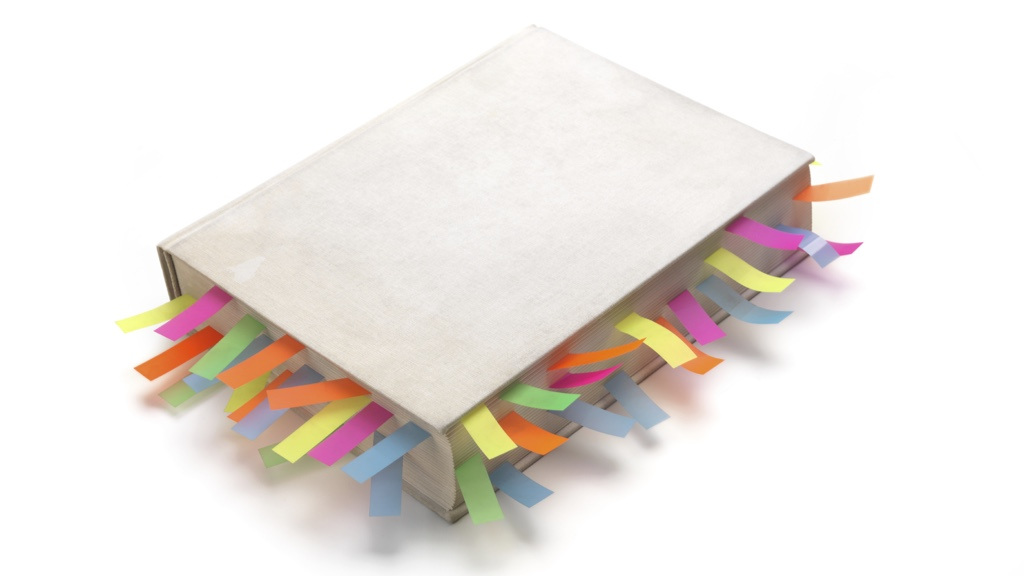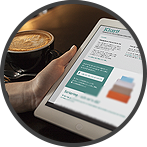Design your own ”found something interesting online”-process
Datum: 2017-05-29 15:13

You are online and stumble upon something you want to get back to later. What do you do?
The possibilities are of course endless in this, nowadays very common, situation. We can bookmark the page, add it to our list of favorites, drag and drop a shortcut to the computer desktop, leave it for later in its own tab, save the article to Evernote or some other ”save good things for later”-service, or go for a number of other alternatives.
Do you have one or several?
Since there are so many ways to do this in, we should decide on exactly how we will go about it. If we do not, we risk saving or highlighting these sites differently every time, hence spreading out a number of unclear ”remember this”-tags in several different places. This makes it hard to find them later on since there are so many places to look in. And in addition to that, these markings or highlights can mean different things. Some we tag because we just want to find it a bit faster later on, others because we want to do something with them in the near future, and something else gets highlighted because what we read was interesting and it might prove useful ”at some point”. The unclarity makes it easier to forget the things we want to get done, since we just created one or several extra locations with tasks in, in addition to our ordinary to-do-list, which is where we usually select tasks to do from.
Your one and only way
This is one of those classic situation where we put something somewhere ”just for now”, that you might recognize from your own life and perhaps have read about in an earlier edition of Done!.
In order to avoid the inconvenience of having these potential gems scattered all around, we need to decide on one consistent way in which we will act when coming across something interesting. Let us design our very own ”found something interesting online”-process.
How? Well …
Do this
- The first thing you need to do is concretize the reasons why we highlight or save something we find — because there are usually several reasons. Speaking for myself (and perhaps you as well) I usually tag or save something due to one of the following four reasons:
a) I thought something looked interesting and I want to read, see or listen more closely later, since I do not have time right now.
b) I have read something and want to be able to find it again at some point; however, I do not know when I will need it, but I want to find it easily once I do.
c) I got an idea from the site or article I found about something I could do at some point.
d) What I found reminded me of something or gave me an idea to do something I know I want to do soon. - Next, we will decide on the one way we will act when saving something due to each of these reasons. It is basically a matter of where we save what we have found. This is the element of surprising difficulty in this process of ours. It can be hard to choose a location when there are so many to choose from, but luckily you do not have to make the perfect selection on your first go, but can change the location if it after a while turns out to not be the perfect one. But we are still simplifying things for ourselves since we by isolating only one location for every reason we want to save things, are making it considerably easier to locate what we save later on. As an example, allow me to share how I have structured my process:
a) (corresponding to the a)-alternative above) I put these in a read, listen to, watch-pile in the service Pocket, where each item gets tagged with a ”read”, ”listen to”, or ”watch”-label. They are left in this digital pile until I have time and feel like reading, listening to or watching something I previously found, but it should still be OK if I never open these sites or tips ever again.
b) What I wish to find at some point further down the line are placed where I keep other reference materials I need from time to time — meaning primarily amongst my digital documents (such as pdfs, text files, spread sheets and so on) in folders on my computer. Since I want to save it where I keep similar materials, I export it in some kind of file, such as a pfd or a shortcut. Yes, it would be faster to just bookmark it, but keeping all my reference materials and information in one place is more valuable to me than those extra few seconds I spend filing it away in a designated place.
c) Things I might want to do at a future date due to something I found online, I make into a to-do-task that I add to my ”sometime, maybe”-list in the to-do-list tool I use, which for me is Things.
d) Finally, if there is something I know I definitely want to do that came from something I found online, I formulate a to-do-task describing what I want to do and add it to my to-do-list, since this is the only place I pick things I will do from (that I do not do immediately, that is). It can even be something I think is important that I read. If so, I put it on my to-do-list rather than in my to-read-pile. Anyhow; that is how I have decided to process all the things I find online. It probably isn’t the optimal structure, but currently this is the best solution for me. - When you have decided how you will act in each scenario, create a cheat sheet so that you can remind yourself what you have decided on when you need to remember. It will also make it much easier to act in a consistent way.
- Now go through all the places where you have spread out bookmarks, favorites, links and other materials you want to access at a later date, and move all the ones you wish to keep to their designated locations, throw the ones that are no longer relevant or interesting away, and create to-do-tasks for all the ideas you have gotten from things you read.
- Done!
Finding more means finishing more
If you design your unequivocal ”found something interesting online”-process and adhere to it consistently, you will follow through on more of the interesting articles, information and ideas you find while browsing the web. Fewer things get forgotten or fall behind. You will get more things down and simply derive more use and pleasure from the great things you once stumbled across.
What is your process like?
How does your ”found something online”-process look like? There are numerous tools to help us organize all the information we are flooded with, and perhaps you have found a way, service or tool that I am unaware of, so feel free to share in a comment.




